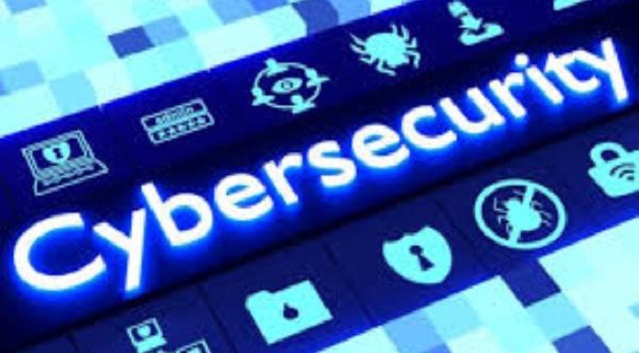E-Business
Preventing, Mitigating Ransomware with Cyber Situational Awareness

If you’re familiar with mafia movies then you’re familiar with extortion – the practice of obtaining something, especially money, through force or threats.
Extortion has been around for centuries – well before “The Godfather” or “Goodfellas.” Even cyber extortion, which extends this criminal activity into the digital world, isn’t new.
What is new, however, is the wide variety of methods that are used by the bad guys to get their money.
Three main tactics are behind cyber extortion: the threat of distributed denial of service (DDoS), the threat of data compromise and ransomware.
DDoS attacks are one of the most popular means to facilitate extortion. These types of attacks typically target business-critical websites in order to increase the likelihood of payment, usually via Bitcoin (BTC), and can have crippling effects on organizations.
In certain cases, such as when targeting hosting providers, the threat actor may add more pressure to pay by using the negative publicity associated with service downtime as a threat.
A second method of extortion involves the potential release of compromised data. This method is dependent on the fact that the target’s data has already been compromised.
The threat of its release to the public domain is used as blackmail in order to extort money from the affected entity.
A third type of extortion, and the one most often in the news as of late, is ransomware – malicious software (malware) that restricts access to the computer system it has infected.
The malware demands that a ransom be paid before restoring access to affected resources.
Ransomware can prevent access to many features of a victim’s machine, including files, applications and the operating system itself.
Because ransomware is an ever-evolving threat that can be more challenging to address than other cyber extortion tactics, let’s take a closer look at how it works and how to prevent and mitigate it.
At a high-level, the ransomware process is fairly standard. Files are encrypted and the attackers, who hold the decryption key, will only allow the target to decrypt the files after the required BTC ransom is paid. Specific details of the attack, however, will depend on the variant.
Until recently ransomware has been delivered most commonly via drive-by-downloads from exploit kits, or through spam emails that either contain malicious attachments or encourage recipients to visit websites hosting malicious content.
But we see that starting to change with threat actors using more targeted methods to achieve their objective, such as spear-phishing emails purporting to be from a job applicant or including the name, job title and job-relevant information of the recipient.
The disclosure that some organizations are paying the fee to unencrypt data likely provides further motivation for these types of attacks. In fact, when the actor estimates there’s a high likelihood of payment of the ransom fee they invest in more reconnaissance which can further increase the likelihood of infection.
As ransomware becomes big business, research on the dark web reveals a number of services being advertised to make it easy for beginners with low technical understanding to execute ransomware attacks with success.
Everything they need is available on a USB stick for $1,200 or they can take advantage of a hosted service in return for 5 percent commission on the ransom payments received.
So how can you combat cyber extortion? Cyber situational awareness can give you greater insights into the tools and processes used by actors that employ DDoS-based extortion and compromised data release extortion.
Advanced knowledge of the typical demands of a threat actor and their capabilities can help you make difficult decisions if presented with such a scenario and help you prevent future attacks.
Mitigating ransomware threats is more complex. It requires a combination of technical and process controls and company-wide engagement – from employees, to executives, to IT security teams. Cyber situational awareness can help you understand the infection vectors of the malware and apply the appropriate security controls to mitigate the risk of infection.
This includes insights you can use to raise staff awareness of how ransomware attacks occur and help you devise technical and procedural controls to prevent infection and to develop ransomware response procedures in the case of infection.
Of course ensuring that backups are maintained and are separate from the network can increase resilience to such attacks. In addition, several decryption tools have been released but, in the cat and mouse game between ransomware and such tools, their effectiveness tends to be short-lived; ransomware developers are continuously developing encryption methods to evade them.
As defenders, staying up-to-date with the latest trends and innovation can be hard, but it is essential in order to effectively prevent and mitigate the effects of extortion on your business.
With cyber situational awareness you can learn about the actors involved in extortion and their tactics, tools and motivations. With this knowledge you can more effectively align your defenses and make better decisions in the face of an attack.
Alastair Paterson, CEO and Co-Founder of Digital Shadows
E-Business
Galaxy Backbone, Rural Electrification Agency Commit to Deepening Digital and Energy Access Across Nigeria

In a major step towards deepening Nigeria’s digital and energy infrastructure, Galaxy Backbone Limited (GBB) and the Rural Electrification Agency (REA) have signed a strategic Memorandum of Understanding (MoU) at a brief but impactful ceremony held in Abuja.

The MoU signals a collaborative effort between both agencies to enhance Nigeria’s digital transformation agenda by integrating reliable energy solutions with cutting-edge ICT infrastructure, especially in higher institutions, Government institutions, underserved and rural communities across the country.
Speaking at the event, the Managing Director/CEO of Galaxy Backbone, Professor Ibrahim A. Adeyanju, described the partnership as “a landmark moment in Nigeria’s journey towards a digitally empowered, sustainably powered, and inclusively connected nation.”
“This partnership exemplifies what is possible when two visionary government institutions come together, united by shared goals and driven by the desire to improve the lives of Nigerians everywhere,” he said.
Professor Adeyanju emphasized that while Galaxy Backbone’s core mandate is to provide secure digital infrastructure that powers government operations, reliable and sustainable energy particularly in rural areas is essential to fully actualize digital transformation.
Major highlights of the MoU include:
- Solar electrification of some of GBB’s Metro Fibre sites in Abuja by the REA.
- Powering Hostels of Higher Institutions across the country through the Fibre to Hostel Project being driven by the Federal Ministry of Communications Innovation and Digital Economy (FMCIDE).
- Support for the rollout of the 774 Local Government Digitization Initiative, beginning with six pilot Local Government Areas.
- Provision of LANs, access points, cloud services, colocation infrastructure, and temporary connectivity to enhance REA’s operational facilities nationwide.
The Managing Director of the Rural Electrification Agency Mr Abba Aliyu, in his remarks, expressed optimism that this collaboration will further bridge the digital and energy divide across Nigeria. He noted that by combining REA’s achievements in expanding energy access with GBB’s robust ICT backbone, both agencies are poised to create lasting impact across governance, education, healthcare, and entrepreneurship.
This partnership is also in direct alignment with the Renewed Hope Digital Transformation Agenda of President Bola Ahmed Tinubu, GCFR, which envisions an inclusive digital economy powered by innovation and sustainable energy.
The ceremony was attended by top management from both organizations as well as members of the media.
With today’s signing, Galaxy Backbone and the Rural Electrification Agency have set the tone for stronger, smarter, and more inclusive public service delivery powered by strategic inter-agency collaboration.
E-Business
NIMC Says NIN Services Back Online

National Identity Management Commission (NIMC) has announced the restoration of its National Identification Number (NIN) verification services nationwide.

This, according to the commission, follows the completion of a system maintenance exercise.
In a statement issued on Friday, the NIMC confirmed that all previously disrupted services have resumed.
“NIMC wishes to inform the general public that the recent technical maintenance has been completed and all services have been restored,” the statement read.
The NIMC urged Nigerians seeking to enroll for NIN to visit the its official website to locate the nearest enrollment centers.
The agency also encouraged individuals to make use of its self-service portal for tasks such as data modification, including name changes.
To further ease the verification process, the Commission recommended downloading the NIMC NameAuth app (oath.app) from the Google Play Store or Apple App Store for quick and secure NIN authentication.
NIMC expressed appreciation for the public’s patience during the service disruption, which had impacted banks, telecom providers, and government agencies that rely on NIN verification for their operations.
E-Business
Report Reveals African Organizations Dangerously Overestimating Cyber defences

Many businesses are overestimating their defence against cyber attacks, which creates a significant human risk blind spot. A new KnowBe4 report exposes a worrying disconnect between what leaders think about their cyber security readiness and what employees experience.

According to the KnowBe4 Africa Human Risk Management Report 2025, based on insights from cyber security decision-makers across 30 African countries, despite high awareness, a critical gap exists in turning that awareness into actual readiness and resilient behaviour.
Key findings from the KnowBe4 Africa Human Risk Management Report 2025:
Confidence vs awareness: While cyber security awareness is high, leaders express uncertainty about their workforce’s ability to act on that awareness. Many feel employees may overestimate their capabilities in recognising, reporting and mitigating threats.
The need for adaptive and personalised security awareness training: Many companies fail to personalise security awareness training to specific roles or risk exposures.
Widespread BYOD usage: A large percentage of employees (between 41% and 80%) use their personal devices for work.
AI policy development is lagging: Many companies (46%) are still in the process of developing policies for using AI tools in the workplace.
Regional variation: Southern Africa trains more, East Africa governs AI better and West/Central Africa sees the most human-related security incidents.
This gap is significant because Africa has become an attractive target to cyber criminals, especially those that launch AI-powered attacks. A LexisNexis Risk Solutions study found 60% of South African organisations have seen an increase in AI-facilitated financial crime – above the 56% global average.
Kehinde Popoola, regional manager and key representative for West and East Africa at Rubrik, said digital transformation is gaining momentum in Africa and companies are more exposed to cyber risk. The Rubrik executive adds that amid an increase in threats, it is crucial that organisations adopt an assumed breach mindset.
The KnowBe4 research shows that cyber security preparedness and the actual structures required to support secure behaviour seem misaligned.
The report highlights that just 10% of cyber security leaders are fully confident that staff would report a phishing attack or other cyber threat, despite rating employee security awareness of cyber threats at four out of five or higher.
There is also a significant perception gap between decision-makers and general employees in Africa regarding security awareness training, with 68% of leaders believing that training is tailored to roles, compared to only a third of employees feeling adequately trained.
KnowBe4 asserts that many organisations only conduct annual or biannual training that is too generic to effectively change behaviour, contributing to uncertainty about its effectiveness.
According to another report, the KnowBe4 African Cybersecurity and Awareness Report 2025, which focuses on end-user based responses, only 43% of African respondents felt confident in their ability to recognise a cyber threat, and just one in three believed their security awareness training was adequately tailored to their role. This comparison suggests the development of a dangerous perception gap in many organisations.
“There’s a disconnect here – between what leaders think is happening and what employees are actually experiencing,” says Anna Collard, SVP content strategy and evangelist at KnowBe4 Africa. “The data shows that without procedural and cultural follow-through, awareness simply doesn’t translate into readiness.”
“The continent’s cyber security posture may be more confident than it is truly resilient,” Collard adds.

 Telecom2 days ago
Telecom2 days agoY’ello Care’s 21-Day Campaign Bridges Digital Divide for Thousands Nationwide

 General News2 days ago
General News2 days agoEnugu Air Commences Operations Today

 E-Business2 days ago
E-Business2 days agoGalaxy Backbone, Rural Electrification Agency Commit to Deepening Digital and Energy Access Across Nigeria

 Broadcasting2 days ago
Broadcasting2 days agoNDPC Slaps Multichoice with ₦766M Fine for Data Privacy Violations

 News2 days ago
News2 days agoLagos-Calabar Highway Gets $100M Push from ECOWAS to Drive Regional Growth

 Telecom2 days ago
Telecom2 days ago20 Years of Digital Leadership: Layer3’s Legacy and the Road Ahead

 News2 days ago
News2 days agoNBS May Release Rebased Figures for Nigerian Economy July 11

 Telecom17 hours ago
Telecom17 hours agoNCC Wins Global ICT Award for Digital Awareness in Schools

























